Uncategorized
Ottawa, Ill. – Rick Gage, Vice President of Sales at LMK Technologies, has been named to
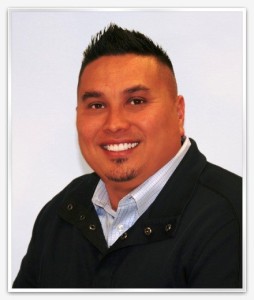 the board of directors for the Midwest Society for Trenchless Technology (MSTT). The non-profit organization was established in 1998 to promote trenchless technology education and its public benefits in Illinois, Indiana, Iowa, Kentucky, Michigan, Minnesota, Missouri, Ohio and Wisconsin.
the board of directors for the Midwest Society for Trenchless Technology (MSTT). The non-profit organization was established in 1998 to promote trenchless technology education and its public benefits in Illinois, Indiana, Iowa, Kentucky, Michigan, Minnesota, Missouri, Ohio and Wisconsin.
“MSTT is dedicated to advancing the science and practice of trenchless technology through training, education and field demonstrations,” says Leonard Ingram, MSTT executive director. “Rick will be a wonderful advocate for our society, helping to spread the word and increase the visibility of this eco-friendly and cost-effective approach to repairing broken, cracked or worn out lateral sanitary sewer lines.”
“Many municipalities and industry professionals are still unaware of the value afforded through the latest ‘no dig’ technologies,” adds Gage. “This includes the ability to easily and cleanly repair underground sanitary sewer lines without digging up driveways, landscapes, porches and other outdoor structures. It is truly a pleasure to discuss and promote the benefits of a technology that offers so many environmental and cost-saving advantages.”
Gage was officially named to the MSTT board of directors at the 2016 Annual Membership Meeting held at the NASTT No Dig Show in Dallas Texas on March 20. MSTT is a regional Chapter of the North American Society for Trenchless Technology (NASTT), which is also a regional Chapter of the International Society for Trenchless Technology (ISTT.)
Over the past 10 years at LMK, Gage has actively worked to educate municipal personnel and specifying engineers about trenchless rehabilitation methods. Throughout this time, he has also served as the direct liaison between LMK and the many government entities, contractors and vendors based in North America, Europe, South America and Asia.
LMK Technologies, a world leader specializing in trenchless methods to renew lateral sewer infrastructure, has more than one hundred U.S. and foreign issued patents for its advancements in trenchless technology. Headquartered in Ottawa, IL since 1993, LMK serves the municipal and residential markets through a network of licensed distributor-contractors. For more information regarding LMK, please visit www.lmktechnologies.com, call 1-815-640-9302 or email info@lmktechnologies.com.
Uncategorized
GSSI, the world’s leading manufacturer of ground penetrating radar (GPR) equipment,
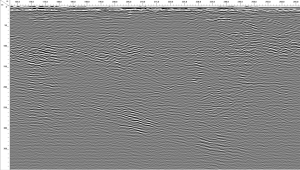 announces its 350 HS Antenna, which greatly improves the depth and data resolution performance of traditional real time sampling technologies. The 350 HS is designed for use with new digital HyperStacking™ technology, which allows users to see deeper targets and operate in conditions considered too “noisy” for conventional systems. Easily configurable, the 350 HS antenna is ideal for archaeology, geophysics, and utility locating applications.
announces its 350 HS Antenna, which greatly improves the depth and data resolution performance of traditional real time sampling technologies. The 350 HS is designed for use with new digital HyperStacking™ technology, which allows users to see deeper targets and operate in conditions considered too “noisy” for conventional systems. Easily configurable, the 350 HS antenna is ideal for archaeology, geophysics, and utility locating applications.
The 350 HS antenna meets even the most stringent GPR emissions regulations, including those of the U.S. Federal Communications Commission (FCC) and the European Telecommunications Standards Institute (ETSI), while operating at similar or faster speeds than conventional systems.
The state-of-the-art 350 HS digital antenna offers a clearer image than a traditional GPR antenna and a 50 percent improvement in depth penetration. It is designed to work seamlessly with GSSI’s SIR® 4000 control unit and with the customized Panasonic Toughpad® FZ-G1 control unit used with the UtilityScan® DF system. With a center frequency of 350 MHz and a depth range of 0-12 meters (0-40 feet), the compact 350 HS weighs 5 kilograms (11 pounds) and is roughly 33.5x31x15 centimeters.
Geophysical Survey Systems, Inc. is the world leader in the development, manufacture, and sale of ground penetrating radar (GPR) equipment, primarily for the concrete inspection, utility mapping and locating, road and bridge deck evaluation, geophysics, and archaeology markets. Our equipment is used all over the world to explore the subsurface of the earth and to inspect infrastructure systems non-destructively. GSSI created the first commercial GPR system nearly 45 years ago and continues to provide the widest range and highest quality GPR equipment available today.
Uncategorized
Robbins drives two competitor EPB machines to a milestone at Namma Metro
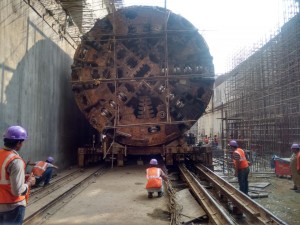 On June 8, 2016, one of two 6.4 m (21.0 ft) diameter mixed-face EPB machines broke through at Namma Metro. After being launched in March 2015, the TBM named Kaveri made its way through its difficult 750 meter (2,460 ft.) drive from Chickpet to Majestic. Sister machine Krishna, launched in December 2015 is not far behind, and is expected to break through in approximately two months.
On June 8, 2016, one of two 6.4 m (21.0 ft) diameter mixed-face EPB machines broke through at Namma Metro. After being launched in March 2015, the TBM named Kaveri made its way through its difficult 750 meter (2,460 ft.) drive from Chickpet to Majestic. Sister machine Krishna, launched in December 2015 is not far behind, and is expected to break through in approximately two months.
In February 2015, Robbins, with our operating company Robbins India, was asked by Bangalore Metro Rail Corporation Limited to take over the operation and maintenance of two competitor-owned EPBMs. The machines were stalled due to low performance and financial issues from the Operating Contractor and lack of support by the original machine supplier. As the North-South Bangalore Phase 1 Metro tunnels were on the critical path, the BMRC looked to Robbins to step in and take over the troubled project. A Robbins/Robbins India team of 70 field service personnel refurbished and modified the existing equipment, both while in the tunnel and before relaunching the machines in Chikpet station. In addition, the on-site Robbins/Robbins India Team supervised all aspects of TBM excavation, segmental lining, mucking and grout plant operations since the relaunch of the machines for both drives.
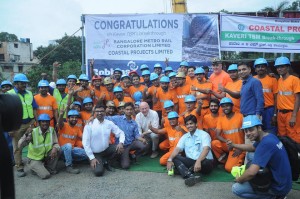 “I am particularly proud of being involved in this project, and to support BMRC with the
“I am particularly proud of being involved in this project, and to support BMRC with the
completion of this tunnel drive and bringing the project back on schedule. This is also the first time The Robbins Company has been responsible for the complete scope of operations on a project,” noted Jim Clark, Projects Manager with Robbins India. “One of the biggest challenges we faced was carrying out cutterhead interventions under compressed air in mixed ground conditions that consisted of varying grades of granite in the lower half of the face, and loose, unconsolidated material in the upper section of the face.”
Clark said that on numerous occasions, compressed air would percolate through to the surface, forcing crews to abort cutterhead interventions. They eventually found a solution by pumping a weak mix grout though the mixing chamber, and into the geology surrounding the tunnel face. The weak mix grout stabilized the ground sufficiently so the cutterhead interventions could be completed.
The Robbins crew carried out tunneling operations while the station was being constructed around them to mitigate delays incurred before they took over project operations. The project’s most difficult challenges included a low overburden and consolidated ground along the alignment, and the discovery of several uncharted wells directly on the alignment. In addition, the majority of the tunnel was bored directly beneath buildings constructed upon what is today considered substandard foundations.
This portion of the Phase One Metro tunnels runs from Chickpet to Majestic at Namma Metro. Once Krishna breaks through, the North and South runs of Bengaluru will be connected, allowing service to an average of 40,000 passengers daily. It is being completed under a tripartite agreement between Robbins India, Coastal Projects Limited, the lead contractor, and project owner, Bangalore Metro Rail Corporation Limited. It is anticipated Phase One will be open in its entirety by November, 2016.
Photos:
Image 1: One of two 6.4 m (21.0 ft) diameter mixed-face EPB used to excavate from Chickpet to Majestic.
Image 2: Lok Home, Robbins CEO, joins the Robbins India team in celebrating Kaveri’s breakthrough at Majestic on June 8, 2016.
Uncategorized
This is an excerpt from a technical paper presented at NASTT’s 2016 No-Dig Show in Dallas, Texas.
Paper TM2-T4-03 written by:
Simon Asinor Adamtey, Bowling Green State University, Bowling Green, Ohio
Lameck Mairura Onsarigo, Bowling Green State University, Bowling Green, Ohio
Alan Atalah, Bowling Green State University, Bowling Green, Ohio
ABSTRACT
Culverts are very critical to drainage and transportation of fluids under highways. State Departments of Transportation maintain thousands of these culverts under highways, road and freeways. The Ohio Department of Transportation alone maintains over 85,000 culverts under Ohio’s priority and general highways. Through regular inspections and condition assessment of these culverts, a course of action ranging from routine maintenance to replacement is recommended. Pipe bursting is a viable alternative to replace deteriorated culverts. However, a high percentage of these culverts are made of corrugated metal pipes which are challenging to burst because the ridges tend to fold under the compression stress making it difficult, and often times, impossible to burst. The research team at Bowling Green State University (BGSU) in collaboration with two pipe bursting manufacturers (TT Technologies and Hammerhead) conducted pipe bursting research tests aimed at finding solutions to bursting corrugated metal pipes. This paper provides an overview of the pipe bursting operations through which four corrugated metal pipe culverts (12”, 18”, and 24” in diameter) were successfully replaced through this collaborative effort.
INTRODUCTION
The State Departments of Transportation (DOTs) are responsible for a large number of highway assets including culverts, which are important drainage structures under roads. The main purpose of these culverts is to transport water or fluid from one side of the highway to the other. During the industrial growth in the 1950s, culvert construction became necessary as a result of the freeway construction projects initiated in United States through the Federal-Aid Highway Act of 1956 (Camp, Boyce, & Tenbusch, 2010). Corrugated pipe, and in particular, corrugated metal pipe (CMP), was generally the material of choice on these low bid projects because of the relative low cost for a given strength of the pipe. The corrugations add strength to the pipe while permitting a reduction in wall metal thickness resulting in lower pipe material cost per foot of pipe (Tenbusch, Dorwart, & Tenbusch, 2009). Many of these culverts were designed for a 50-year life cycle, which is now ending (Camp, Boyce, & Tenbusch, 2010). For these assets to continue to perform their intended function and meet future demands, they have to be replaced or rehabilitated.
As underground structures, culverts are less noticeable and are often ignored until a catastrophic failure occurs (Gee, 2007). These failures lead to temporarily roadway closure, disruption of traffic flow, and considerable re-installation costs. A complete collapse of the culvert may result in the collapse of the roadway posing a major safety risk or hazard to motorists. With factors such as aging and deteriorating national infrastructure, increasing congestion, highway safety challenges, and limited funds, state departments of transportation are looking for innovative ways to manage their transportation assets (Gee, 2007). Consequently, the selection of economic alternatives to replace deteriorated culverts has become an important aspect of managing these assets.
Open-cut, which is the traditional method for culvert rehabilitation, is an expensive alternative for deep installations due to the massive excavation and need for shoring. Apart from the direct cost, there are social costs such as traffic disruption, road closures, business interruptions, noise pollution, environmental impact, and reduced safety for both workers and road users associated with open-cut. Trenchless rehabilitation methods such as cured-in-place pipe, slip lining, fold and form and other relining techniques have the disadvantage of reducing the internal diameter of the existing pipe and hence not applicable where there is the need to increase the diameter and flow of the existing pipe.
Pipe bursting provides an innovative and practical alternative to open cut without the disturbance and the cost of excavating a trench (Atalah, 2008). Pipe bursting has several advantages over the traditional open-cut method; it is much faster, more efficient, and less expensive especially in gravity applications due to their deeper depths. Pipe bursting is the only trenchless rehabilitation method that can replace an existing pipe with an entirely new pipe resulting in total replacement of the existing deteriorated pipe (Lueke, 1999). Pipe bursting also has the advantage of maintaining or increasing the flow capacity of the existing deteriorated pipeline by increasing the diameter of the replacement pipe. Pipe bursting has been used to replace almost all types of pipes including lightly reinforced concrete pipes, ductile iron pipes, clay pipes, steel pipes, vitrified clay pipes (VCP), cast iron, plain concrete, asbestos and some plastics. However, corrugated metal pipe (CMP) is not considered a good candidate for pipe bursting because the ridges of CMP fold like an accordion under compression thickening the wall and making it almost impossible to burst or slit or split.
The Ohio Department of Transportation (ODOT), alone maintains over 85,000 culverts and about 20% (17,500) of these culverts are corrugated metal pipes (ODOT Culvert Database, 2014). Considering the large number of existing CMP culverts and the continual use of CMP for culverts, it is essential to expand the pipe bursting applications to these culverts, which will in turn provide an alternative rehabilitation method for municipalities and transportation agencies.
To determine the system and tools for successful bursting of corrugated metal pipes, field tests were conducted that involved the replacement of actual culverts under existing roads. The two pipe bursting manufacturers, TT Technologies and Hammerhead, contributed their bursting equipment and technicians. These tests provided the opportunity for the manufacturers to investigate different accessories, designs, and system configurations to successfully burst corrugated metal pipes.
Through the collaboration of ODOT, the manufacturers, and the research team from BGSU, four CMP culverts were successfully replaced using pipe bursting. The pipe bursting tests were done in ODOT’s Districts 2, 5, and 10. All the pipes were replaced with high density polyethylene (HDPE) DR 17 pipes which were delivered and fused on site. The District 10 test was done with a pneumatic bursting system, while the District 5 and 2 tests were done with a static bursting system.
To read the complete paper, download it here. Downloads are complementary for members so be sure to log in first.
Copyright 2016 by the North American Society for Trenchless Technology.
Original paper distributed at NASTT’s 2016 No-Dig Show.
All rights reserved.
Uncategorized
The UKSTT Awards and Gala Dinner in Association with Westrade
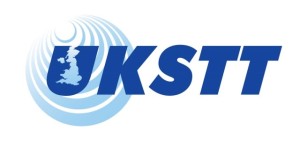
Venue: The Marriott Hotel, Peterborough Business Park, Lynch Wood, Peterborough, PE2 6GB
£2,000 bursary prize for the winner of the ‘Young Professional’ category!
Every year, the UKSTT presents the winner of the ‘Young Professional’ category with a £2,000.00 bursary to help fund their travel and accommodation to any part of the world, allowing them to undertake further research into their chosen area of Trenchless Technology.
The Society recognises the need to encourage the work that young professionals are bringing to the industry and are keen to recognise this at the awards ceremony.
Young Professionals (<30 years) are asked to submit a 1500 word entry that best demonstrates their contribution to the field of Trenchless Technology. UKSTT will be looking for evidence of an understanding of Trenchless Technology, the individual’s contribution made, the quality of the submission and the candidate’s vision for the future of Trenchless Technology.
Find out what other winners of this prestigious award experienced as a result of this bursary, visit our website http://ukstt.org.uk/about-ukstt/news/82-news/756-liammacfarlane
CALL FOR ENTRIES
This year submitting an award couldn’t be easier! A new online submission form has been created for each category that can be filled in and submitted on-line. For further information regarding the Awards or the Gala Dinner please visit the UKSTT website
Deadline date for all entries is the 1st July 2016
To sponsor the Awards & Gala Dinner– Please contact Paul Harwood at pharwood@westrade.co.uk
To book tickets or reserve a table, please contact Chantel Avis at cavis@westrade.co.uk
Uncategorized
New name reinforces editorial direction, executive-level audience

BRECKSVILLE, OHIO — UIM: Water Utility Infrastructure Management, the leading professional journal covering the municipal water and wastewater sector in North America, is changing its name to Water Finance & Management.
The partial rebranding will include the name change, a new logo, redesign of the print journal and a new website, waterfm.com, all launching in June 2016.
While the editorial direction of the publication is not changing, the new name will bring a more focused title to the content covered in the journal and redefine what the publication was initially built on – the finance and management of water systems. The journal’s distribution and audience of executive-level utility managers, decision-makers, elected officials and consultants will also remain the same.
Originally launched in 2004, UIM was initially branded by publisher Benjamin Media as Underground Infrastructure Management. Soon after, the emphasis became all about water and the name was tweaked to UIM: Water Utility Infrastructure Management.
“Our journal has always been about finance and management, so in that respect, nothing has truly changed,” said Bernie Krzys, CEO of Benjamin Media. “We felt there was an opportunity to improve the identification of our brand with a more direct name that emphasizes what we’re all about. So circling around in a matter of speaking, this well-regarded journal’s name has evolved to become Water Finance & Management.”
The new name will better outline the editorial coverage of the journal. On the finance side, coverage includes traditional sources of utility funding, private financing and P3s, rate setting, affordability, regional cooperation and more. On the management side, coverage includes asset management, implementation of new technology, data management and application, smart water networks, water loss, leak detection and more.
The name change also streamlines other initiatives within the UIM brand, namely its two conferences – the Water Finance Conference and Water Asset Management Conference. The new Water Finance & Management logo has also been redesigned to convey the executive-level tone of the brand and reincorporates the goldfish from the UIM logo, representing the ecology of clean water and its importance to quality of life and environmental progress.
Be on the lookout for Water Finance & Management in the coming weeks as we look forward to continuing to serve the water market!
Editorial:
Andrew Farr
330.752.1919
Advertising:
Hannah Schiffman
330-315-2135
Conferences:
Jeni Leist
330.315.2209
 the board of directors for the Midwest Society for Trenchless Technology (MSTT). The non-profit organization was established in 1998 to promote trenchless technology education and its public benefits in Illinois, Indiana, Iowa, Kentucky, Michigan, Minnesota, Missouri, Ohio and Wisconsin.
the board of directors for the Midwest Society for Trenchless Technology (MSTT). The non-profit organization was established in 1998 to promote trenchless technology education and its public benefits in Illinois, Indiana, Iowa, Kentucky, Michigan, Minnesota, Missouri, Ohio and Wisconsin.




